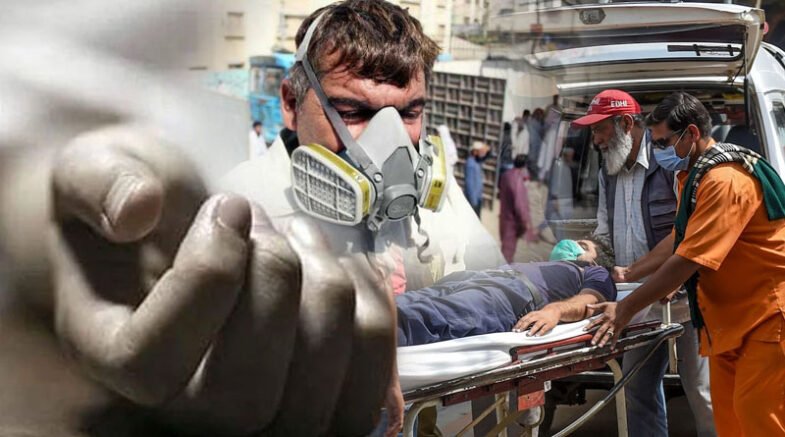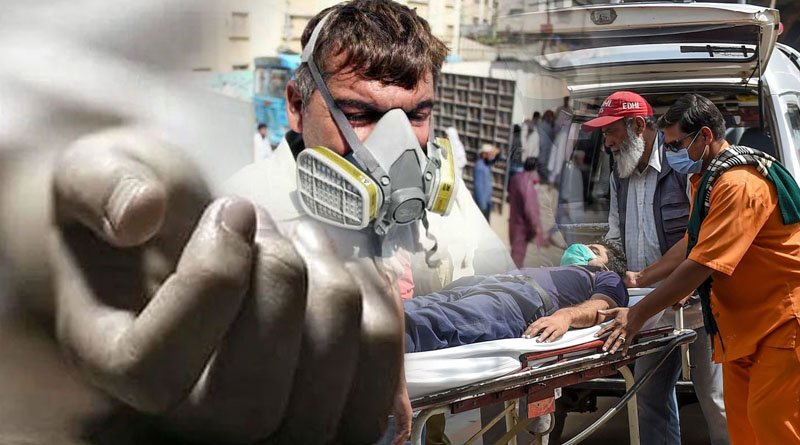Senior pathologist Prof. Syed Siraj-ud-Daula stated that he thought toxic emissions caused acute respiratory distress, which caused so many sudden deaths.

Senior pathologist Prof. Syed Siraj-ud-Daula, who is closely monitoring the case of deaths in Karachi’s Keamari developments, shared his professional opinion. He stated that he thought toxic emissions caused acute respiratory distress, which caused so many sudden deaths, particularly in children whose immunity and nutritional status were significantly lower than adults.
Officials are anxiously awaiting the results of a laboratory report that may definitively explain how 19 lives were lost last month in the area, sources said, as the flawed investigation into the Keamari tragedy continues.
Several private laboratories are currently processing the report, which is a thorough chemical examination and analysis of samples obtained during the post-mortem examination of three-year-old Abdul Haleem.
According to sources, the autopsy was completed after the victim’s father filed a FIR alleging that his son died in an unnatural manner. The preliminary results of the post-mortem report reveal distressing information about the illness of the child.
The child reportedly passed away in the early hours of January 31 “due to noxious fumes from factories as alleged in the police reports,” according to this report written by five senior experts.
Health officials were informed by the grieving family that the child had stopped eating and had developed a cough and fever three to four days prior to his passing on January 31. That evening, the boy had breathing issues and passed away shortly after; they continued.
The experts said the following in their remarks: “Despite numerous washings, blackish deposits of varying intensity were found over both knees, the dorsal aspect of both feet, including the toes and plantar surfaces, and the interior surface of both ankles. Right ankle full thickness skin was removed, left unwashed, and sent for histopathology and chemical evaluation.”
The cause of death has been held until reports from chemical analysis, histopathology examinations, and labs are received, according to the report.
Samples of blood and tissues were taken from various body parts, including the kidneys, lungs, and liver. incomplete investigation According to sources, the investigation suffered from serious flaws from the start.
For instance, they claimed that despite environmental pollution being initially highlighted as the primary cause of numerous deaths, no significant effort was made to gather evidence or traces of it.
When news of the deaths flashed in the media, information gathered from various sources revealed that the health department was unable to perform even one thorough autopsy. Consequently, a vital piece of evidence was lost.
Second, after the factories that were allegedly responsible for toxic emissions were sealed, the Sindh Environmental Protection Agency took air quality samples. “A private laboratory must obtain annual certification from Sepa in order to do that as well. Thirdly, no attempt was made to examine the materials and waste produced and used by the factories to determine how they might impact human lives. ”
According to a source with knowledge of the case’s developments, one of the nearby factories produced iron ore that resulted in dangerous gases. He continued that officials ought to have examined the blood samples taken from a portion of the sick population and given to the National Institute of Health (NIH) for testing for the presence of toxins.
Additionally, as was mentioned in the media, there were a number of measles cases among the village’s young residents.
However, a proper autopsy could have easily determined whether or not toxic emissions caused their demise because toxins have an impact on all vital body organs.
Unfortunately, we were unable to complete this in time. He claimed that a number of kids had pneumonia, which is also brought on by breathing in toxic fumes.
